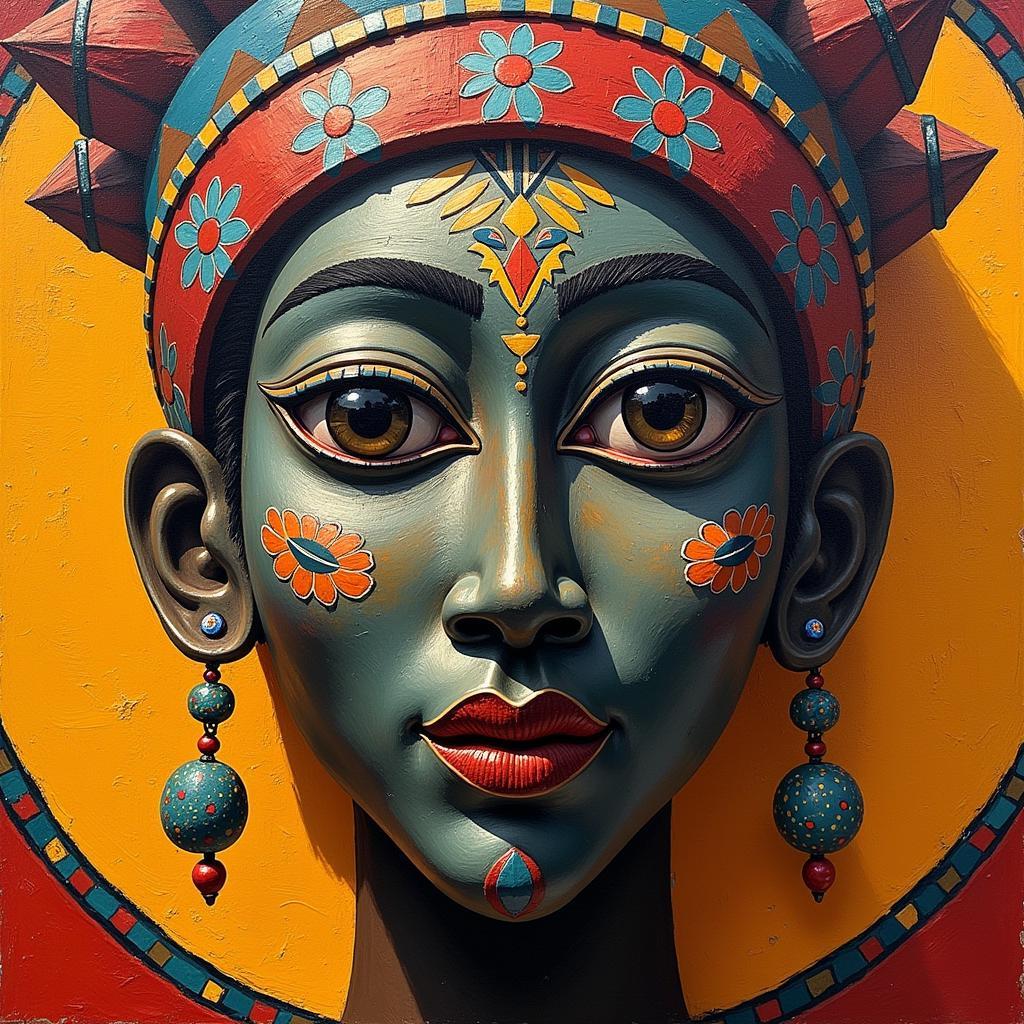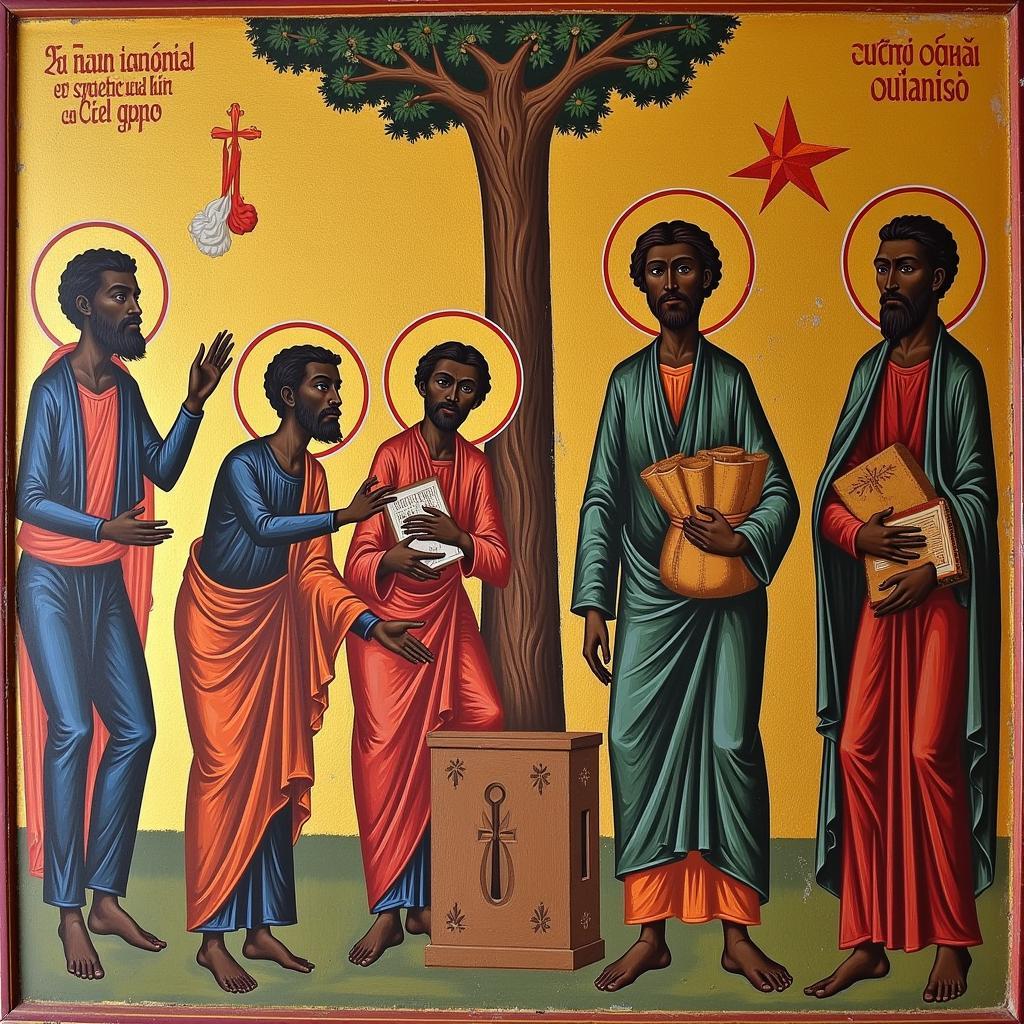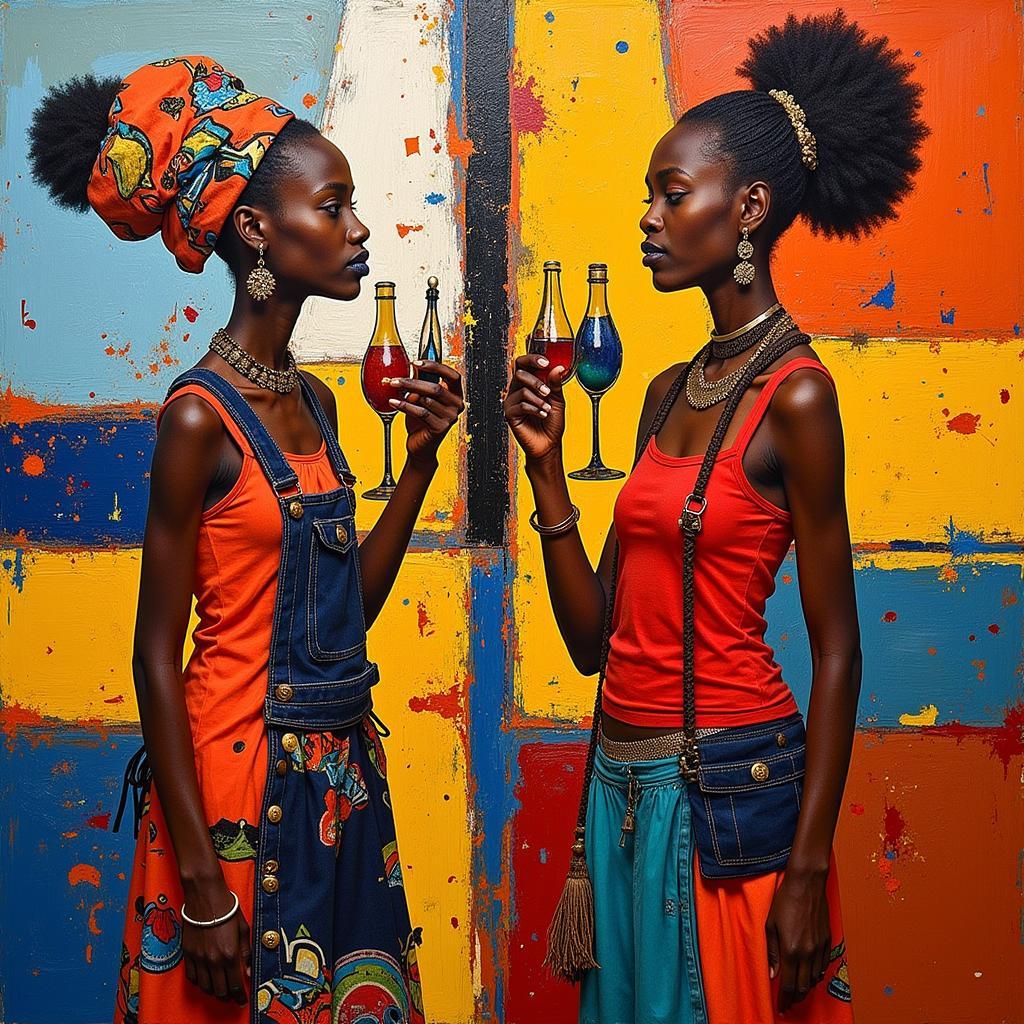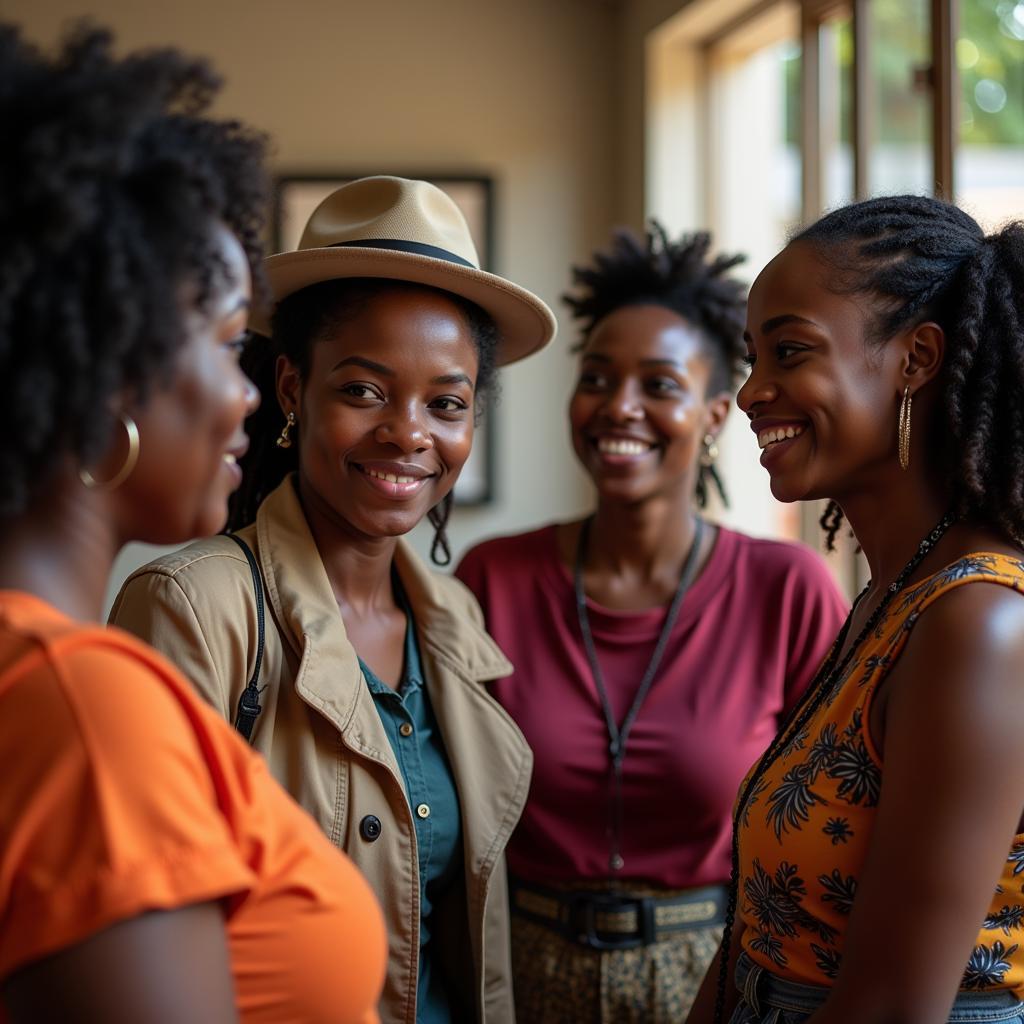African Paintings: A Colorful Journey Through Culture and History
African Paintings offer a vibrant window into the continent’s diverse cultures, traditions, and historical narratives. From ancient rock art to contemporary masterpieces, these visual expressions captivate with their bold colors, symbolic imagery, and unique perspectives.
 African Tribal Mask Painting
African Tribal Mask Painting
Exploring the Rich History of African Paintings
The history of African paintings stretches back millennia, with some of the earliest examples found in the form of rock art. These ancient paintings, discovered across the continent, offer glimpses into the lives and beliefs of early African societies. Animals, hunting scenes, and spiritual figures are common motifs, providing invaluable insights into the cultural practices and natural environments of bygone eras.
As societies evolved, so did their artistic expressions. Various regions developed distinct painting styles and techniques. In West Africa, for instance, the Yoruba people are renowned for their elaborate masquerade traditions, which feature vibrant masks and costumes often depicted in paintings. These artworks often serve as visual narratives, preserving cultural myths, historical events, and ancestral legacies.
 Ethiopian Religious Painting
Ethiopian Religious Painting
Diverse Styles and Influences
African paintings encompass a breathtaking array of styles, each reflecting the unique cultural identity of its origin. From the intricate patterns and bold colors of Ndebele house paintings in South Africa to the stylized figures found in Tingatinga art from Tanzania, each tradition offers a distinct visual language.
The Impact of Colonialism and Modernism
The arrival of colonialism and the subsequent introduction of Western art practices brought about significant shifts in African paintings. While some artists embraced these new influences, others sought to preserve and celebrate their indigenous traditions. This period witnessed the emergence of artists like Ben Enwonwu of Nigeria and Gerard Sekoto of South Africa, who navigated these complexities, blending Western techniques with African aesthetics to create powerful and evocative works.
 Contemporary African Abstract Painting
Contemporary African Abstract Painting
African Paintings Today: A Global Stage
Contemporary African paintings continue to evolve, embracing new mediums, techniques, and conceptual approaches. Artists like Amoako Boafo, known for his expressive portraits of Black subjects, and Julie Mehretu, acclaimed for her large-scale abstract works, are gaining international recognition and pushing the boundaries of contemporary art.
The rise of online platforms and international art fairs has further amplified the visibility and accessibility of African paintings. Collectors and enthusiasts worldwide are increasingly drawn to the vibrant colors, expressive forms, and compelling narratives embedded within these artworks.
FAQs About African Paintings
What are some common themes in African paintings?
Common themes include spirituality, daily life, ancestry, nature, and societal values. These themes often intertwine, reflecting the interconnectedness of these elements in many African cultures.
Where can I purchase authentic African paintings?
Reputable art galleries specializing in African art, online platforms like Omenka, and cultural centers often offer authentic pieces for sale. It’s essential to research and purchase from trusted sources to ensure authenticity and ethical sourcing. You can find African art paintings for sale at Omenka.
Are there specific colors or symbols that hold particular meaning in African paintings?
Yes, colors and symbols often carry significant cultural and spiritual meanings. For instance, red might represent power or vitality in one culture, while symbolizing mourning in another. Researching the specific cultural context is crucial for accurate interpretation.
How has the global art market impacted African artists?
The growing global interest in African art has provided greater visibility and opportunities for artists. However, it’s crucial to ensure ethical practices within the art market, promoting fair compensation and recognition for artists.
What is the significance of masks in African art?
Masks hold immense cultural and spiritual significance in many African societies. Often used in ceremonies, rituals, and performances, they embody spirits, ancestors, or deities, connecting the wearer to the spiritual realm. You can explore more about African art pai tings featuring masks and other cultural elements.
Continuing the Exploration
From ancient rock art to contemporary masterpieces, African paintings offer a captivating journey through the continent’s rich cultural tapestry. Whether you’re captivated by bold colors, intricate patterns, or the compelling narratives woven within each brushstroke, these artworks invite us to appreciate the diverse perspectives and artistic expressions that have flourished across the African continent for centuries.
For those intrigued by the dynamism of African dance, African dancers paintings au offer a unique perspective on this captivating art form. Additionally, exploring acrylic African paintings can provide insights into how artists have adapted this versatile medium to express their cultural heritage.
Whether you’re an art enthusiast or simply curious about African culture, delving into the world of African paintings is sure to be a rewarding experience. These vibrant expressions of creativity offer a glimpse into the soul of a continent, celebrating its rich history, diverse cultures, and enduring artistic legacy.
For inquiries or assistance with African art, please contact us at:
Phone Number: +255768904061
Email: kaka.mag@gmail.com
Address: Mbarali DC Mawindi, Kangaga, Tanzania.
Our dedicated customer service team is available 24/7 to assist you.



